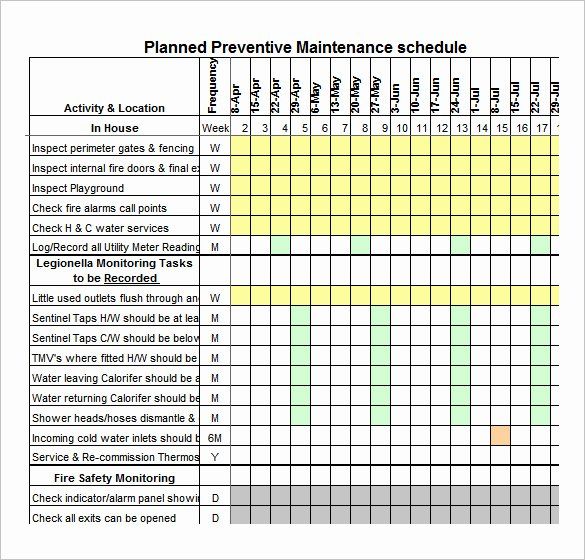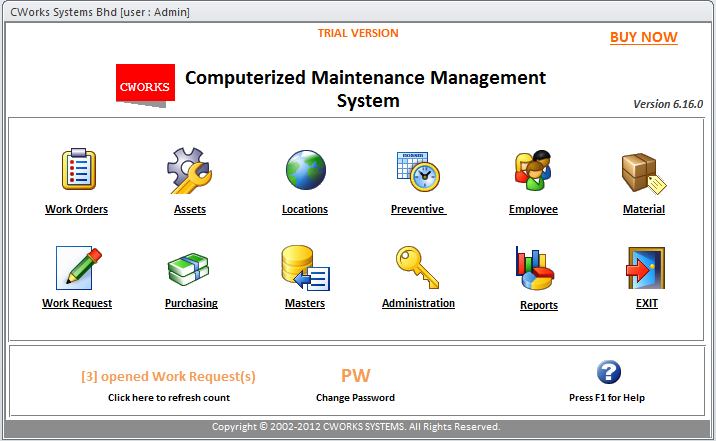
Planned preventive maintenance (PPM) is a type of preventive or preventative maintenance (PM) that is a systematic approach for maintaining the building operations or extending the building life before any disruption or breakdown.
Preventive maintenance can be either planned or unscheduled. However, when it comes to building maintenance, planned preventive maintenance is the most effective approach for maintaining the performance and integrity of residential and commercial property sectors.
This article briefly discusses the features of planned preventive maintenance (PPM) strategies for building maintenance.
Features of Planned Preventive Maintenance (PPM)
Planned preventive maintenance is a preventative maintenance strategy that specifies the solution for each building maintenance issue. It is a maintenance activity that should be planned, documented, and scheduled. The goal of PPM is to determine “which” task and “how” that task would be completed.
An effective PPM for residential and commercial properties saves the property from degradation and ensures the asset value. In addition, without an effective PPM, minor issues in the property can turn into costly repairs (structural repairs and maintenance).
PPM aims to reduce downtime by keeping all the resources like labor and parts ready to resolve the issues before any breakdowns. Furthermore, it follows a proactive approach to maintenance to prevent small problems from becoming large.
PPM protects the building condition and ensures that the investment does not fall into disrepair, thus benefiting the landlord.
PPM also helps the tenants by reducing the potential dilapidations at the end of the tenancy.
PPM schedules and checklists are prepared and put in place based on the property type. A property or a facility manager mainly monitors PPM schedules.
Benefits of Planned Preventive Maintenance (PPM)The main benefit of PPM is that it identifies and addresses the issue before the condition worsens. A well-planned and implemented PPM reduces reactive maintenance costs by 12 to 18%.
Note: Reactive maintenance is the maintenance that is performed when an asset has already broken down or malfunctioned. Here, the steps are taken to restore the asset to operational conditions.
Other benefits of PPM are:
PPM approach ensures health and safety compliance. For example, regular inspection of a building roof can prevent collapse and additional health and safety risks.
Properly performed PPM activities can avoid the need for major unplanned repair works.
PPM strategies effectively use the manpower and budget throughout the maintenance year.
PPM approach works in compliance with the manufacturer warranty requirements.
It increases the value of the property by preserving and enhancing the asset.
PPM Schedule
Planned preventive maintenance (PPM) can be scheduled either in calendars or software packages.
PPM Calendar

A spreadsheet or a calendar incorporates the manufacturer’s suggested maintenance schedules for the building’s items. The items are specified on the calendar based on the date, equipment running hours, distance traveled, etc.
PPM calendars provide a single interface for all the maintenance. As a result, the interface is easier to track and manage maintenance.
In addition, these calendars can generate reminders or alerts when any maintenance item is due. PPM calendar is used for small sites.
PPM Software

PPM software is designed to simplify and streamline the management of maintenance operations by preventing downtime. These software systems are also called Computerized Maintenance Management System (CMMS) or Enterprise Asset Management (EAM) software. These are employed at bigger job sites.
Some of the items added in the Planned Preventive Maintenance (PPM) checklist for residential property management are:
- Gas safety certificate
- Roof inspections
- Electrical safety standards
- Property condition surveys
- Boiler service
When it comes to multiple occupancy buildings, the details included in the PPM checklists are:
- Lift engineering and inspection details
- Fire risk assessments
- Emergency light testing
- Health and safety risk assessments
The preventive maintenance checklist mentions many critical checkpoint activities that would endanger life or property or bring huge restoration or replacement works if ignored.






